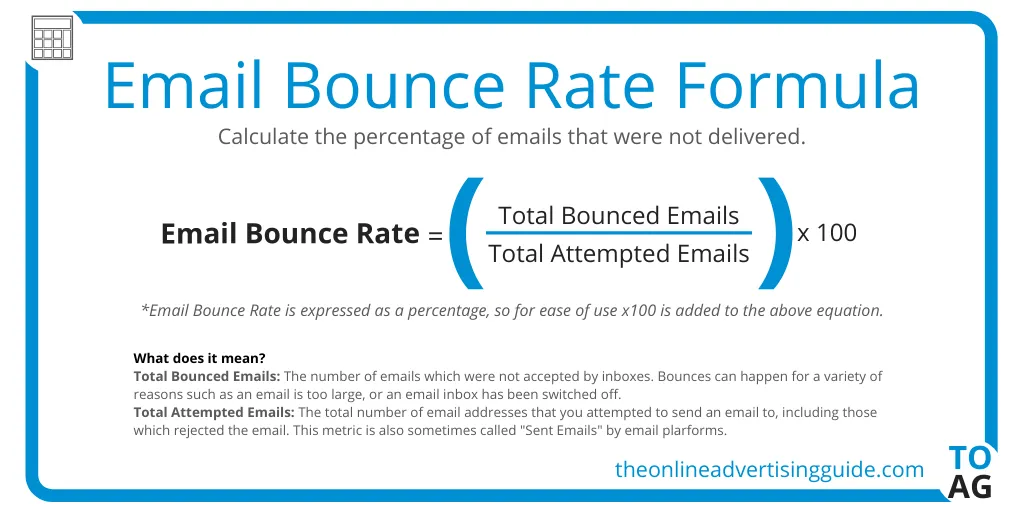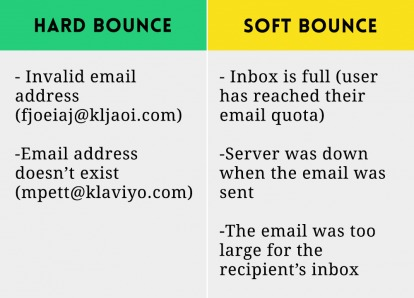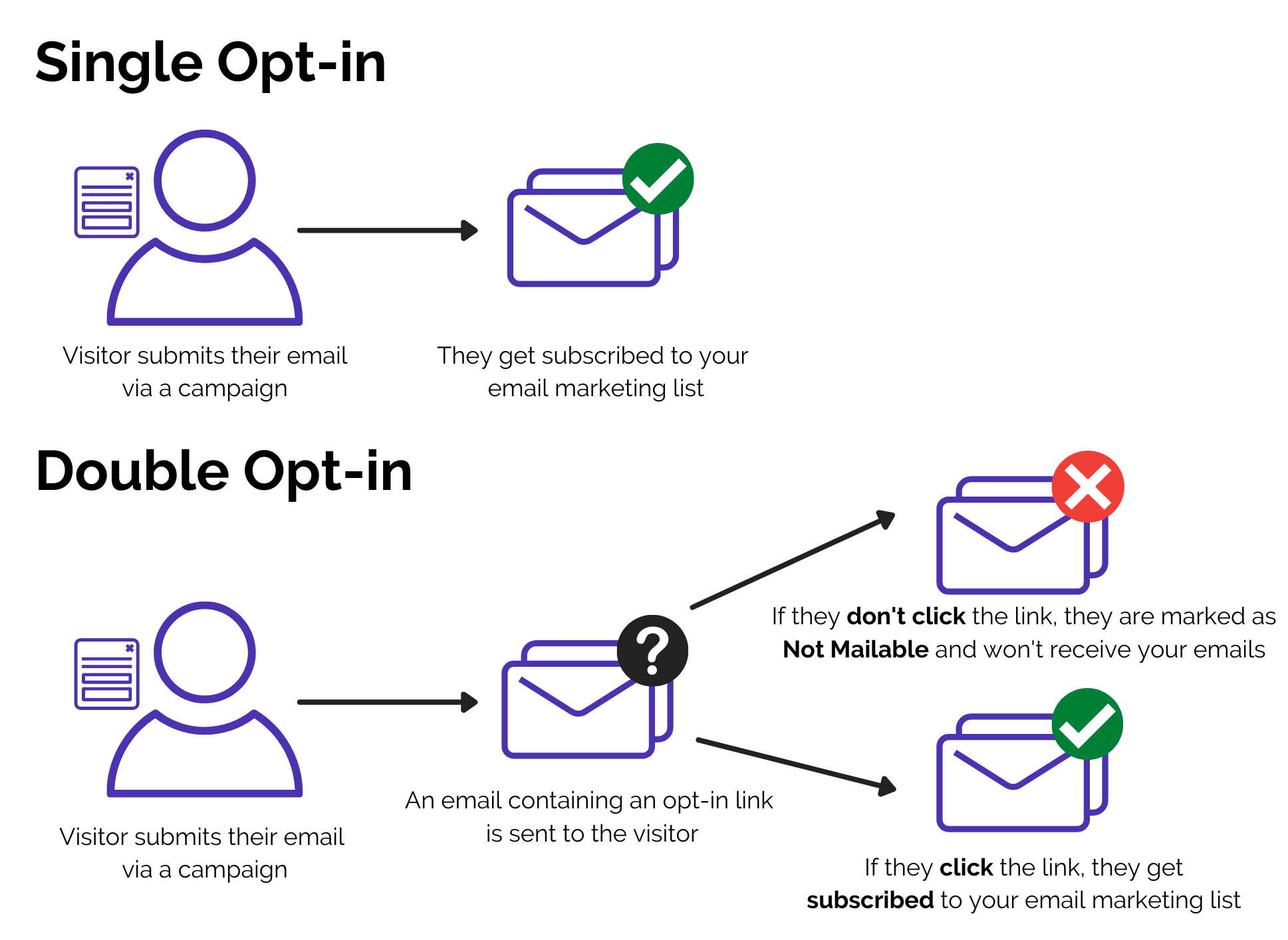You’ve crafted the perfect email for your list of recipients. You hit send and feel proud of your work. You gladly watch the open rate slowly tick up.
That is until you notice all the emails that never received your message. As the email bounces keep counting up, you wonder what you could be doing differently.
Error: The resource attribute is invalid.
If you regularly send mass email marketing campaigns, you are likely familiar with this situation. Email bounce backs are a consistent reality in the world of email marketing. However, it isn’t something that you are stuck with forever. With a little insight and a few good strategies, you can cut down your email bounce rate significantly.
Kas ir atteikts e-pasta vēstule?
Tā kā lasāt šo ziņu, iespējams, jau esat iepazinušies ar terminu “e-pasta atteikums”. Tomēr ir lietderīgi sākt ar skaidru definīciju. Tie ir e-pasta ziņojumi, kurus saņēmēja serveris kāda iemesla dēļ noraida (vairāk par to tālāk). Kad serveris e-pasta vēstuli noraida atpakaļ, tas nosūta arī kodu, kas var būt noderīgs, lai saprastu, kāpēc tā tika noraidīta.
The process of email bounce backs
This happens towards the end of the email delivery process . Whenever you send out an email, it follows these steps:
1. Jūs rakstāt e-pasta vēstuli un aizpildāt lauku “Kam”. E-pasta ziņojumiem daudziem saņēmējiem jūs to darāt automātiski no kontaktu saraksta.
2. Kad nospiežat sūtīt, vienkāršā pasta pārsūtīšanas protokola serveris to iekļauj rindā piegādei.
3. The SMTP server looks up the server it should be sending the email to by looking at the domain name after the “@.” It then checks the domain name server (a digital address book) for the IP adrese of that server.
4. Izmantojot pasta pārsūtīšanas aģentu, SMTP serveris nosūta e-pastu uz saņēmēja serveri.
5. Ja e-pasta vēstule ir veiksmīgi piegādāta, saņēmēja serveris to parāda saņēmēja iesūtnē. Ja tas nav noticis, serveris e-pastu atsūta atpakaļ ar kļūdas kodu.
Why should you care about email bounce rate?
Jūs, iespējams, domājat, ka bounce rate nav tik liela problēma. Galu galā jūs taču vairāk interesē, kad e-pasts tiek atvērts, nevis kad tas tiek atstāts, vai ne? Nē, e-pasta atteikumu rādītājs ir svarīgs, jo tas ietekmē jūsu turpmāko e-pasta vēstuļu piegādājamību un reputāciju.

Ja jums ir augsts atteikumu rādītājs, ir lielāka iespējamība, ka tiksiet melnais saraksts by recipient servers (subsequently increasing your bounce rate even more). Furthermore, your messages are more likely to be labeled as spam if you have a low reputation due to email bounces.
Plus, spending time working on your bounce rate will help you be more thoughtful about who you are sending your emails to. Chances are you will also improve your open rate as you sakopt savu adresātu sarakstu.
E-pasta atteikumu veidi
As mentioned above, emails bounce for several different reasons – we call them hard and soft bounces. They can be broadly categorized as two types of bounce: soft bounce emails and hard bounce emails. The former type is temporary or easily fixable whereas the latter is (nearly) permanent.
Ja jūsu SMTP serveris saņem “soft bounce” e-pasta kļūdu, tas var mēģināt atkārtoti nosūtīt ziņojumu.

Soft bounces and why they happen
Pārāk liels e-pasta vēstule: Your email is larger than the recipient server will accept. This is not as common these days but these email bouncebacks sometimes happen. It is most common with image-heavy designs. One or two such bounces may not be an issue or error message. However, if you have many soft bounces, you likely need to work on your email optimization and make your email body easier to read and open.
Serveris nav sasniedzams: The recipient server may be down or overloaded. Typically, resending the email will resolve this if this is a temporary issue on the recipient’s side. If you get this error repeatedly for the email address, it is likely a more permanent problem.
Pastkastīte ir pilna: Unsurprisingly, this means that the recipient’s inbox is full and cannot accept additional email messages. Again, this is much less common with modern email systems. However, it can still happen. In most cases, your SMTP mail server will retry periodically until the message is accepted – or return an SMTP error message.
Atvaļinājuma atbilde: Depending on the configuration of the recipient server, you may receive an email bounce back if the recipient has an auto-reply or “out of office.” In other cases, the system may simply reply RE: the message bounced.
Iepriekš minētās problēmas parasti tiek novērstas ar laiku vai nelielām izmaiņām. Tomēr, ja saņemat grūti atteikta e-pasta kļūdu, lietas var būt nedaudz sarežģītāk atrisināt.
Hard bounces and why they happen
Slikta e-pasta adrese: One of the most common reasons for a bounce is that the email you are trying to send to doesn’t exist. This could be because you were provided with a fake email address. It could also be because the email used to exist but has since been removed. In some cases, it may simply be a typographical error. Most email fields don’t have spellcheck so invalid addresses can easily end up on your list.
E-pasts tika bloķēts: Your email address may have been blocked by the email server. This happens with very strict spam settings or if the recipient has blocked you . In the case of the former, you could ask to be whitelisted. In the case of the latter, you may be out of luck (plus, the recipient probably doesn’t want to hear from you).
iekļauts melnajā sarakstā: Email service providers also blacklist certain senders. This is similar to a recipient server’s block list but happens earlier in the process. It may be caused by spam complaints, high bounce rates, certain types of relevant SATURS , or a sudden increase in sending activity that your email providers spot.
These types of email bounces are more challenging to deal with because they won’t be resolved simply by resending the email. In some cases, you may need to simply purge the recipient. In other cases, you may be able to improve your email reputation.
E-pasta atteikumu īpatsvara samazināšanas stratēģijas
Keeping your bounce rate low should be one of your main concerns as an email marketer. Luckily, there is a precise set of strategies you can employ to ensure your bounce rate stays low, for both soft and hard bounces.
Clean up your mailing list and keep it clean
This is valuable for more reasons than just cutting down on bounces. It will also help you home in on the contact information of leads that are genuinely interested in your products and services. Spending more of your time on selling to likely prospects is always a good thing. You’ll also be able to improve your email marketing metrics for future campaigns, such as your deliverability rate, open rate, and ultimately conversion rate.
Generate your mailing lists from a form that asks permission for receiving messages
If you are doing business in the European Union, you may be legally required to do this anyway. While it is tempting to build a huge list, by asking people to opt in, you are narrowing down your list to the people who want to hear from you.
Sending content to people who are uninterested is likely rolling a boulder up a mountain.
Consider having a double opt-in email process
This is when you verify that you have the correct email by sending an email with a subscription link. While this is not the right approach for every business, it will eliminate the possibility of typos in emails.

Sending regular (but not spammy) emails helps improve your email reputation
Obviously, you should not be sending emails just for the sake of sending them. However, you can benefit from regularly providing value to your recipients. This will reduce your bounce rate, increase engagement and help you avoid spam filters.
Keep your bounce rate low by avoiding sounding like a spammer
Make sure your emails are well-written and professional. Avoid sending spammy subject lines, and never hide any content in your email HTML.
Pasta saraksta sakārtošana
One of the most important ways to improve your email bounce rate is to keep your mailing list clean . When you get a hard bounce, you should purge that email address from your list immediately. The sole exception to this is if you are blocked by a strict spam filter for a recipient you think may whitelist your Domēns . In this case, you could contact the recipient through other means and ask to be approved.
Pretējā gadījumā jums ir jāuztur savs adresātu saraksts tīrs, lai izvairītos no tā, ka e-pasta vēstuļu atdošana sabojā jūsu reputāciju. Lai gan daži ir gandrīz neizbēgami un pilnīgi normāli, pastāvīga problēma radīs vairāk melno sarakstu un bloķēšanu.
As mentioned, one of the simplest ways to do this is to remove any emails that cause hard bounces, however, it is not recommended to wait until your email bounce backs. A safer approach for your email sender reputation is to verify the emails in your list prior the send out, with an E-pasta pārbaudītājs , and check it for undeliverable or Risks adreses.
Low-quality email addresses in your mailing list are likely doing significantly more harm than good. You will have much more success with a shorter but more focused list than a long and messy one.
Aizsargājiet savu e-pasta reputāciju ar Bouncer
Jūsu e-pasta reputācija ir svarīga . If you want to keep a low bounce backs rate and increase your open rate, you need to have a good reputation. Fortunately, you don’t have to manage it alone.
Using our E-pasta pārbaudītājs , you can keep your mailing lists clean and optimized for a minimal bounce rate and maximum saderināšanās .
Our system is simple to use and highly effective with over 99.5% accuracy in mailing list management. If you want to improve the impact of your email marketing, learn more about kāpēc mūsu klientiem patīk Bouncer . Sāciet pārbaudīt savus adresātu sarakstus jau šodien.
Email bounce backs: frequently asked questions
Whatare email bounce backs?
An email bounce occurs when an email message is returned to the sender, either because it was undeliverable or because it was rejected by the recipient’s email server. Delivery status notification (DSN) messages provide more detailed information about the cause of a bounced email.
Why are bounced emails important?
Bounced emails can negatively impact your organization’s reputation, resulting in lower delivery rates and higher costs associated with maintaining clean mailing lists. Additionally, if left unchecked, bounce message emails can result in your email deliverability rate suffering.
Kāda ir atšķirība starp mīkstu un cietu atspērienu?
A soft bounce means that the recipient’s email server temporarily rejected the email (so the email bounced), while a hard bounce occurs when the email is permanently rejected by the recipient’s email server.
Why do email bounces happen?
Email bounces can happen for a variety of reasons, including invalid email addresses, full mailboxes, technical issues with the recipient’s email server, or spam filters blocking the email. Bounce rates might vary as well depending on the intended recipient.
How can I reduce my email bounce rate?
To reduce your email bounce rate, you can regularly clean your email list, use double opt-in, remove inactive subscribers, and monitor your sender reputation for email campaigns.
What should I do if my email bounces?
If your email bounces, you should first check the bounce reason to determine the cause – there are various types of email bounces. Then, you can take steps to address the issue, such as correcting the recipient’s server or email account, contacting their email service provider, or modifying your email program to comply with spam regulations.


